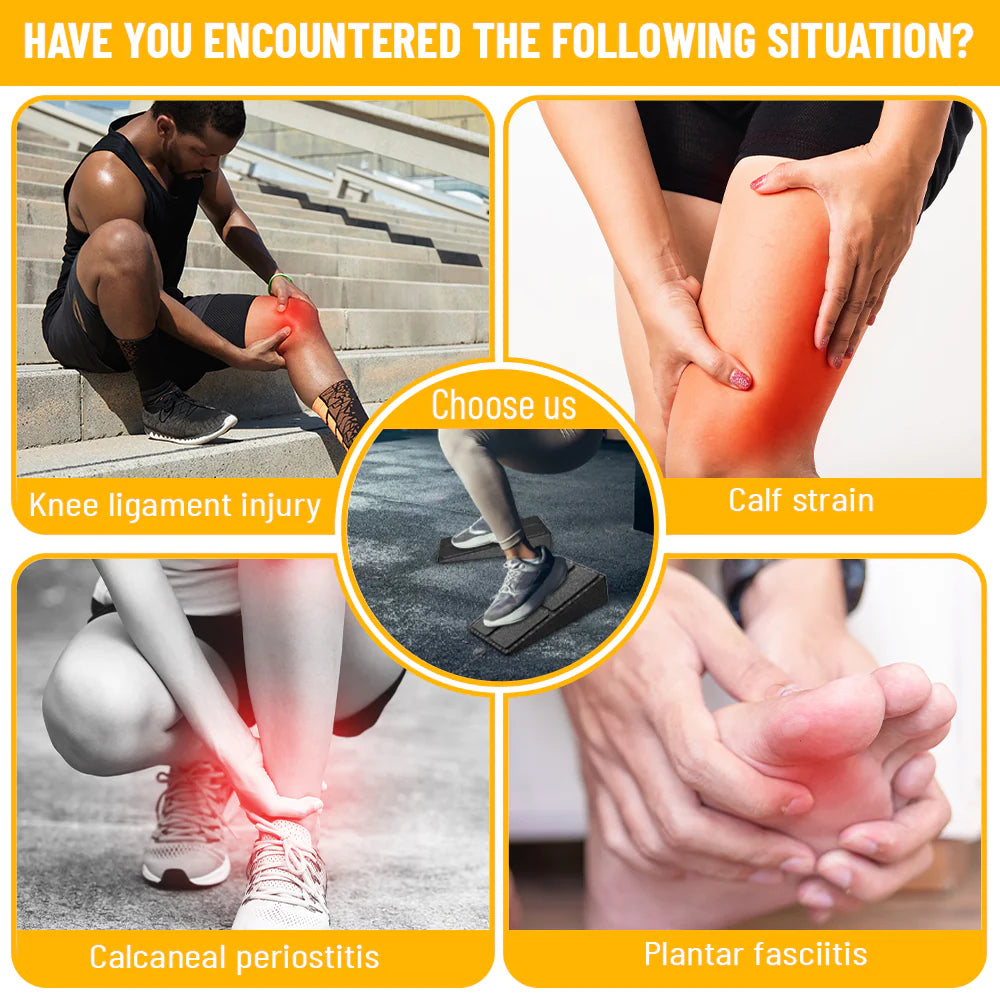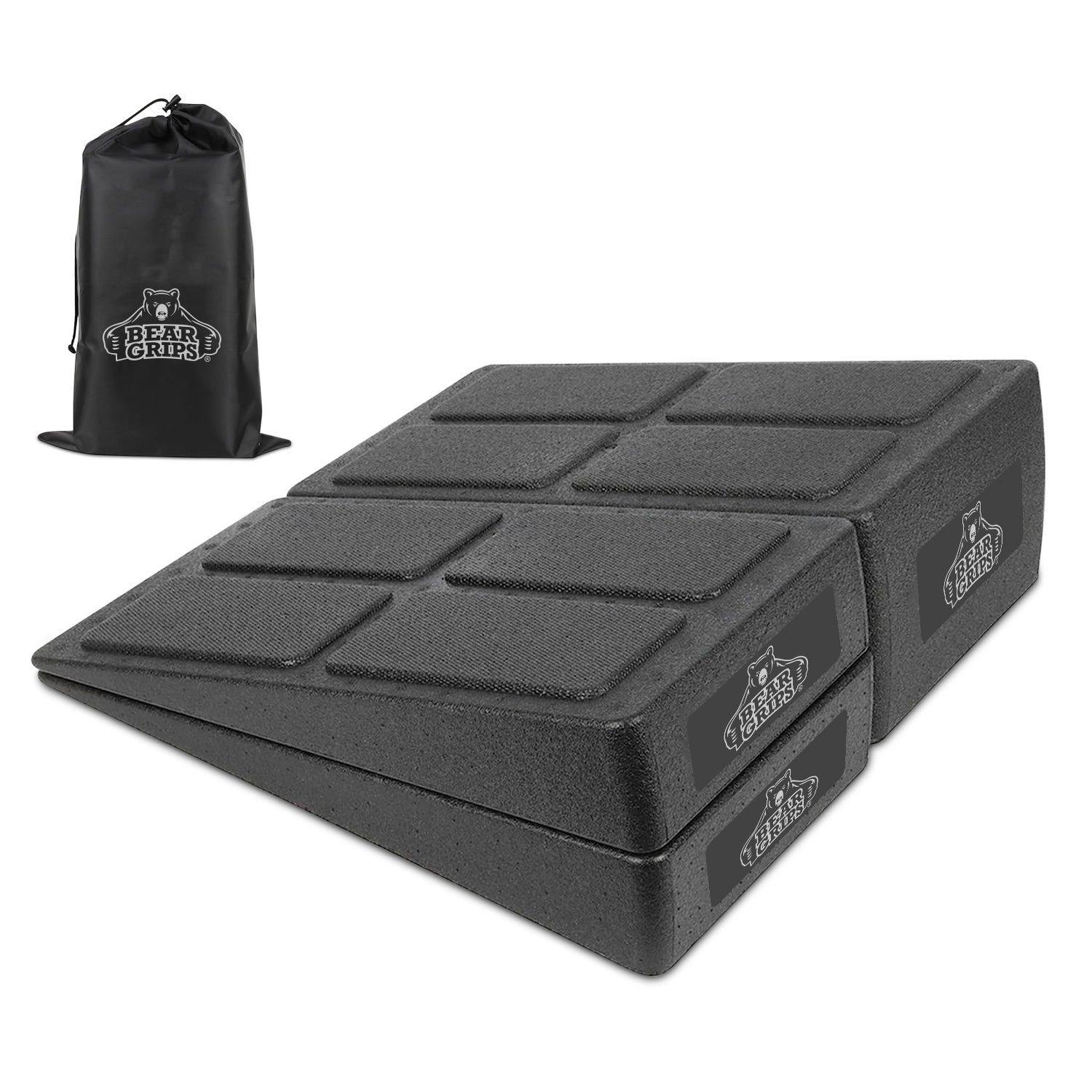
Best Ways To Fix Muscle Imbalances
Share
One of the human body’s sides is definitely lighter than the other when you are lifting weights or exercising. The right side of your arm is more comfortable for lifting weights and performing household duties than the other.
It is okay if this is something you have only now noticed. Most people have a powerful part and an inferior side to their muscles since this is a natural occurrence. However, for many people, other elements like physical trauma and daily life routines may increase the imbalance.
It's critical to fully understand muscular imbalances and the reasons behind limb strength differences. If left untreated, imbalances in muscles can lead to damage and incapacity, but fortunately, there are numerous methods to balance it.

Why Does Muscle Imbalance Matter?
If your muscular imbalance is minor, you should not be concerned. But you ought to use caution if the variation starts to show more clearly.
Many claim that when working out in the gym, they feel an imbalance in their muscles. It’s possible that you have found that, in comparison to the arm on your left, the right one can carry larger weights for longer repetitions.
According to physiotherapists, imbalances in a specific muscle group may be a sign of imbalance in various other muscle groups as well. This comprises muscular imbalances in your back, legs, biceps, triceps, chest, pecs, and squats.
A significant imbalance in muscles may cause a more powerful muscle group to overwork itself in an attempt to make up for the weaker one, which might result in pain and damage on both sides. The muscles will not function correctly if there is a muscular imbalance. They will tighten abnormally and start troubling you. Recognizing your muscle imbalance will enable you to strengthen that part that is weaker.
Why Does Muscle Imbalance Happen?
Most likely, you have always been aware that your body has stronger muscles on the other side than the opposite side. When lifting large goods or beginning a staircase climb, you consistently employ the same shoulder and leg. Your cognitive system knows that using your stronger limb will be more effective than using your inferior one, so you automatically and recurrently use it to complete tasks.
Our bodies are typically greater on one side than another for several reasons. These can be genetic, or they may develop due to experiences or behaviors in your daily life that cause muscle dysfunction. Your body has a single stronger side than others, and here are the reasons.
- Genetics: It is correct to say that 90% of readers are naturally right-handed, and just 10% are born with the left. Most people have a single controlling arm and foot, and mostly, it's the opposite side. The terms “handedness” and “footedness” represent the dominant side of our bodies.to perform fine activities, you may extend your most powerful limb far more precisely and with greater ease. As a result, your most powerful arm will be in use, making them muscular and stronger than the dominant side. Our genes, which define the structure of the brain, dictate this.
- Injury: The loss of muscle along the side that got hurt may occur if you were in an incident and needed to immobilize a single hand or one leg. Your muscle atrophies grow smaller and thinner as a result of insufficient use and this condition is found as wasting of muscle. It occurs once you break a bone in your limb as well as need to spend many weeks wearing a cast. Uneven muscle tone results from the contrary side’s muscles growing wider and more powerful throughout this time.
- Job: Individuals who work with their hands often suffer from bilateral muscular imbalance. For instance, if you are working in a building, you most likely perform labor-intensive manual chores all day long with the hand you control. This typically indicates that one limb will be larger and significantly more powerful than another.
- Sleep Position: There is a strong likelihood that the part of the body you sleep on most of the time will weaken and shrink.
- Lifestyle Habits: A single side of the human body will get tougher than the opposite side due to other living patterns like folding your lower body in an identical manner or using the same pair of hands to hold supermarket bags.

Muscle Strength and Endurance Testing
Recognizing and treating imbalances begins with knowing how your thigh muscles are currently performing. Testing for muscular imbalances gives you important information about how well your upper and lower bodies operate, enabling you to pinpoint any areas that could require special attention.
Single-Leg Squats
In addition to testing the power of glutes, hamstrings, and quadriceps, this workout also discloses any disparities between both sides. Keep a close eye out for any problems keeping your balance or other obvious variations in the level and form of your legs.
Leg Press Variations
By modifying the foot positioning on the calf press machines, one can highlight the calf muscles or quadriceps. Through a comparative analysis of weight-lifting performance with various foot positions, you can discern differences in specific muscle power, which will inform your corrective strategy.
Step-Ups
Use a stable seat or platform and concentrate on deliberate motions. If you step onto one leg more easily than the other, take note of any difficulties or instability since this may be a sign of an imbalance of muscles.
Isometric Holds
For example, take a static stretch and sustain a pose for a long time. You can identify the possible limitations by assessing the muscular region’s durability through its capacity to maintain correct posture and stability during isometric activities.
Resistance Exercises
Perform strengthening exercises with an emphasis on deliberate motions and appropriate form, including calf raises, leg curls, and extensions. Your capacity to perform these movements on each leg with the same force and intensity will provide you with important information about imbalances in muscles.

Functional Movement Screen (FMS)
You might want to include a Functional Movement Screen (FMS) in your evaluation process. It is an inclusive approach that assesses basic movement patterns. FMS can guide your therapeutic exercises by highlighting areas and recognizing unbalanced muscles.
Exercises to Fix Muscle Imbalances
A planned approach to exercise science is necessary to correct muscular imbalances. Including such in your regimen can help to improve your upper and lower body’s functionality as well as correct any imbalances that may be present.
Unilateral Exercises
Exercises that isolate and build each leg separately, such as lunges, single-leg squats, and step-ups, encourage balanced growth and correct any imbalance in muscle in the region of concern. To optimize their remedial benefits, pay attention to maintaining perfect form while regulating motion.
Hamstring Curls
The key to improving the flexibility and power of this set of muscles is to perform hamstring curls. Use variants like supine and prone hamstring curls to change things up and work the muscles in a new way.
Calf Raises
You can make sure that your calf muscles are fully engaged by including both standing and sitting calf raises in your workout. Robust calves enhance ankle stability and may lessen the chance of lower extremity injuries.
Hip Abduction/Adduction:
Use resistance bands or specialized equipment to work on the abduction of the hip or abduction. These concentrate on the hip joint muscle component, correcting any abnormalities causing discomfort while modifying flex patterns.
Balance Exercises
Bending your knees slightly increases rhythm and corrects imbalances by testing the body part’s capacity to maintain balance. Exercising involving stability balls, like ball lunges and sitting leg lifts, adds instability while working the core regions and developing balanced strength in the lower abdomen.
Leg Press Variations
To encourage balanced growth, change your initial position’s foot location to highlight the thighs or quadriceps. It is possible to target various regions of the muscles in the legs with different leg pressing variations, such as single-leg pushes or long and narrower stances.
Eccentric Training
The squat and lunges that involve coordinated lowering cycles put tension on the muscles, encouraging balanced growth and limiting the possibility of imbalances in the muscle mass.
Dynamic Stretching
By encouraging ideal muscular length-tension ratios, dynamic stretches like leg swings, squats, and press-ups help to prevent imbalances and prime opposite upper and lower limb muscle cells for action. To activate the muscle bones and tendons dynamically, concentrate on deliberate motions.
Obtaining professional advice from a wellness specialist or orthopedic surgeon can assist in finding deeper causes to resolve muscular imbalances, particularly if you have recurrent soreness or notice severe symptoms.
Recap
Musculoskeletal imbalances may prove confounding due to a multitude of variables that contribute to them. Genomics, an athlete's total strength, muscle types, and any prior injuries must all be taken into account. First, identify something by making it simple. Seek expert assistance if issues persist and self-troubleshooting doesn’t resolve them.

Visit the Bear Grips website and buy the Squat Wedge for you at an affordable rate and with pf high-quality. So, what are you waiting for? Buy Now!


